Women's prisons are rife with trauma. Can California set a new course at Chowchilla?
Published in Women
CHOWCHILLA, Calif. — Gazing across the crowd of women, fresh from county jail in their orange prison jumpsuits, Lena Coleman wishes she could save them all.
And it's her job to try.
In July, after 20 years in prison for attempted murder and a gun enhancement, Coleman, 47, became one of three dozen prisoners at the Central California Women's Facility in Chowchilla to graduate from a peer support specialist program.
The program is a part of the California Model, an ambitious effort Gov. Gavin Newsom launched in March 2023 to overhaul a prison system built on fear and retribution and replace it with opportunities for more normalized social interaction. The changes are modeled after prison operations in Norway and other Scandinavian countries, where incarceration is considered a tool for rehabilitation rather than harsh punishment.
At Chowchilla, a sprawling campus set in the farm fields of Madera County, the peer support specialists have become the backbone of that transformation.
Every day, they fan out across the prison, serving as something between a therapist and life coach to the roughly 2,100 women incarcerated at the facility, one of two women's prisons in California.
Coleman works in Building 501, a reception yard that houses new prisoners before they transfer "over the wall" into the general population.
Her job is often limited in scope: helping a new arrival find prison garb that fits, or working with the healthcare services team to remind patients to take their medicine or attend an upcoming medical appointment.
Other times, the work requires more intense intervention.
Staff might call a peer support specialist to help de-escalate violence or ease a behavioral crisis. As mandated reporters, they can be the difference between someone dying of suicide or accepting mental health services.
Mostly, Coleman is there for whenever someone needs to talk — or cry — with a trusted confidant.
"I tell them that prison is going to be what you make it," she said. And then she offers them a piece of advice: "I'm just like you. I've been there, done that. Only difference is I have changed my ways."
Newsom chose San Quentin in Marin County, the state's oldest prison, to jump-start the California Model last year. At San Quentin, prison officials are focused on improving relations between officers and prisoners, two historically warring factions in a violent system unaccustomed to change.
The California Model looks a bit different at Chowchilla — and it must.
A majority of incarcerated women in the U.S. endured some combination of physical, sexual and emotional abuse before committing the crime that sent them to prison, researchers have found. Often, that abuse was inflicted by a husband or boyfriend. Most are single moms of young children who have lost custody because of their crimes.
At the same time, women's prisons often lack the mental health services and rehabilitative programming to help address deep trauma, said Alycia Welch, associate director of the Prison and Jail Innovation Lab at the Lyndon B. Johnson School of Public Affairs at the University of Texas at Austin.
"Prisons and jails, when they were built, were not built at all with women in mind," Welch said.
Compared with male inmates, incarcerated women report higher rates of sexual assault in prison. In September, federal prosecutors announced a civil rights investigation into sexual abuse at both Chowchilla and the California Institution for Women in Chino, citing multiple reports of groping, inappropriate touching and rape by correctional workers.
Over the last two years, more than 100 formerly incarcerated women have brought lawsuits against the California Department of Corrections and Rehabilitation and current and former correctional officers, alleging graphic incidents of sexual abuse by prison staff dating back a decade.
Corrections officials have said they welcome the investigation. They said that recent reforms have made it easier for women to report misconduct and that staff are now required to wear body cameras at the two women's prisons. Expanded training to help staff work with prisoners who have dealt with significant trauma is a key pillar of the California Model.
While Coleman appreciates the efforts by Newsom and others in Sacramento to overhaul the state's dark prison culture, she thinks it's important for prisoners themselves to help steer the changes. And she views her mission as a peer support specialist as central to that transformation: working to instill a sense of community inside prison walls that was often missing for these women on the outside.
"We all have untreated trauma that contributed to criminalization. So when we come in here, we share our lived experiences with each other," Coleman said. "We're more comfortable with each other than we would be with staff."
::::
Statewide, female inmates make up fewer than 5% of California's 91,000 prisoners. Of the nearly 51,000 people serving time in state prisons who were convicted of violent crimes, fewer than 2,000 are women.
When women do commit violent offenses, researchers have found the episodes often are tied to self-defense or coercion by an abusive partner. "Sometimes women describe it as something just snapped, and they couldn't take it anymore. And they acted out as their only means of protection," Welch said.
That makes it more crucial for women's prisons to have the kind of robust rehabilitation and job training envisioned under the California Model, to better prepare them for release, she said.
The peer support specialists are part of that effort, said Affie Tamuno-Koko, chief nurse executive for the state prison system. In addition, providing formal training as certified peer support specialists gives the women who eventually will be released from prison a transferable job skill. The certification, combined with their on-the-job experience while incarcerated, ensures "they're not coming out as entry level," Tamuno-Koko said.
Beyond the employment possibilities, the role "has restored their value as people," Tamuno-Koko said. "I think it's a very selfless act, to not just care about yourself, but really want to spend your time genuinely helping someone."
Lt. Monique Williams, the prison's public information officer, said the women doing peer support are making a tangible difference. The peer support specialists at Chowchilla have provided more than 10,000 one-on-one counseling sessions and 430 group sessions, according to the corrections department.
"They're needed," Williams said. "Women understand women."
Lynne Acosta, a former prisoner, said she can see the transition unfolding. Acosta was incarcerated for more than 20 years for conspiracy to commit first-degree murder before her 2018 release from Chowchilla. Now she's back inside on a regular basis running group sessions as a life coach working for the Anti-Recidivism Coalition, a nonprofit that provides reentry and support services for former prisoners.
Huddled in a circle in a drab prison classroom in the middle of June, she led a group of two dozen women who were reflecting on the role trauma had played in their lives — and how it helped put them behind bars.
The women gathered had been locked up for charges including drug and firearms possession, robbery and murder. Nearly half were serving life sentences.
"How many of you in here, regardless of your sentence, it's your first time ever in trouble?" Acosta asked. Almost everyone raised a hand.
How many were survivors of domestic violence? About half.
And how many think they might have avoided their crimes if they had received support for addiction, domestic violence, sexual assault or other traumas? Everyone.
Acosta remembers the years when such support groups were uncommon, and how badly she needed them.
"Women aren't supposed to commit violent crimes," was the common notion, Acosta said. Women were "demonized and dehumanized," as though because of their gender, they should be doubly punished for ending up in prison.
Acosta now lives nearby in the Central Valley and visits the prison almost every day to lead sessions. She's optimistic that the state's reform efforts are creating opportunities that might make things a little better for her friends who are still inside.
They include Elizabeth Lozano.
Lozano, 49, grew up in a violent neighborhood in Long Beach, where she said she experienced sexual abuse by a family member. She was sentenced to life without parole for her involvement, at age 16, in a 1992 gang shooting that killed a 13-year-old girl. Lozano was convicted of murder, although her boyfriend said he pulled the trigger.
In prison, Lozano received her associate's degree in behavioral and social sciences, and co-founded an organization for juvenile offenders, along with another group that brings victims, law enforcement officers and prisoners together for discussions.
This year, Lozano became a peer support specialist as another way to make amends, she said. She works with fellow prisoners on coping skills and anger management, and helps them set goals for their time in prison or look up legal cases in the law library. After losing a loved one in prison in 2016 to an apparent suicide, Lozano also counsels women experiencing mental health crises.
Recent changes to state law make it easier for offenders who were imprisoned as youths to be released. Lozano's next parole hearing is in May.
"I can't undo the great harm that I have caused," Lozano said. "I feel like the only thing that I can do is give from the best part of me and help others in their recovery."
::::
Adding to the challenges of overhauling an entire correctional system are the traumas that happen within prison walls.
The allegations of widespread sexual abuse and serial rapes at the Chowchilla and Chino facilities that are the basis for the federal civil rights investigation may have come as a jolt to state corrections officials, but not to the women who came to see it as part of prison life.
"Emotionally, physically, sexually, we are retraumatized, revictimized everyday in here," said Kandice Ortega, 38, a peer support specialist who has served 15 years for second-degree murder. "That needs to change."
Williams, the public information officer, said she hopes — and believes — that change is underway.
Williams has worked for the corrections department for 23 years, rising through the ranks to become a lieutenant. She worked for several years in the unit that housed California's death row for women before the state's recent efforts to transition condemned prisoners into the general population.
Fellow staffers, as well as prisoners interviewed, said Williams embodied the spirit of the California Model before it had a name. She spends her days in a swirl of energetic motion, defying stereotypes of cold, bullying guards. She addresses prisoners with candor and kindness, stopping frequently to ask about their lives.
Williams has visited Norway twice to learn about prison practices she could bring back to Chowchilla. She's coordinated barbecues and parties for staff and prisoners to improve relations. During a Juneteenth celebration, she took the stage and sang gospel music for the prisoners.
"You're going to get on the train or get off," she said of California Model naysayers. "Because we're moving."
Coleman, the peer support specialist, also chooses to believe that progress is possible. Either things can continue as usual, leaving incarcerated women to deteriorate in their isolation and trauma. Or they can grow and heal so they are better citizens when they leave prison — and strengthen the sense of community for those left behind.
"We have each other, we have the peer support specialist program, and we do have some staff that do care," Coleman said. "Is this going to be make it a perfect setting? ... No. Not even the world outside these gates is."
On a Friday at the end of October, Coleman was working her way through a stack of paper with the names of dozens of women she was supposed to counsel that week. She called one woman over for a check-in.
Brandi Collins was back in prison.
For more than half her life, Collins, 43, has struggled with addiction to crystal meth and crack cocaine. Prison records show she has been incarcerated nearly a dozen times.
"I have a criminal thinking," Collins said. "This is my home."
But this time, she has Coleman, someone she can trust and confide in.
"I felt bad about my dang self. So maybe the first week I was here, I said, 'Can I talk to you?'" Collins said.
"Do we judge you for returning?" Coleman asked.
"No, she didn't judge. I know they've seen me on this yard a thousand times," Collins responded.
"I want to forgive myself, and I want to change, and I don't know what it takes," she said. Then, turning to Coleman, she said, "I look at you and you give me hope."
©2024 Los Angeles Times. Visit at latimes.com. Distributed by Tribune Content Agency, LLC.












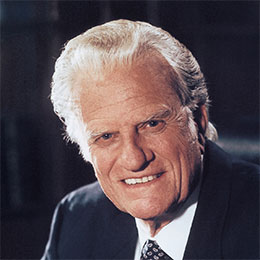




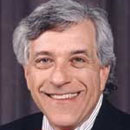

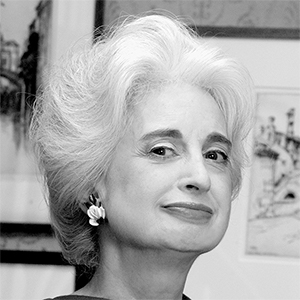
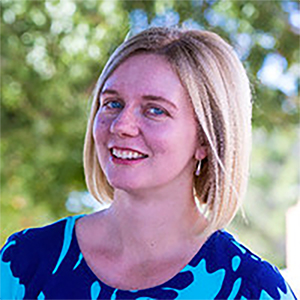
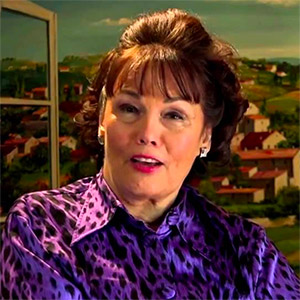



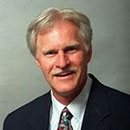







Comments